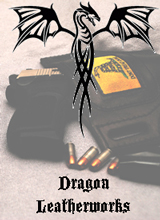There’s been a little bit of banter in this post about Point Blank Range.
I was unaware that point-blank may or may-not have a forensics definition of “Shot at Very Close Range”, and the linked wikipedia page cites a dead link so I can’t confirm that. Generally when a non-gunnie says the term that’s what they mean, and to some extent they are correct, but read this definition:
Point blank range is the distance a marksman can reasonably expect to fire a specific weapon hitting a specific target without further adjustment of the fixed sights.
Now on handguns (which is the gun used in the Kroger shooting) this is more-or-less true. The factory fixed sights on most handguns are set for a very close zero, of about 10-15 feet. That means you line up the sights at this range and the bullet trajectory won’t wander too far from that zero in that range or a bit beyond it. The furthest I’ve ever shot pistols with any expected results is about 25 yards, and with that you need very little hold-over, and generally no matter what my sights are set on, my skill with a pistol is not suited for those ranges.
Also as a defensive shooting I’d find it VERY hard to justify a lethal force scenario much beyond those ranges without getting into a bit of fantasy. Generally we’re talking contact to maybe 30 feet, which on most pistol sights “Point Blank”.
On a rifle things can get interesting. First with a modern rifle like an AR-15 you have a little something called “Sight Offset“. Rifles that have a stock that his more-or-less inline with the bore to control recoil and muzzle climb need to elevate their sights a few inches above the bore-line of the rifle. The AR-15 is known for having high iron sights as you can see in the link. On the linked rifle it means at very close range the rifle will print about 2 inches low because the sights are about an inch high above the rifle.
Since the bullet travels in an arc it actually RISES to the line of sight before dropping. The faster the bullet travels the flatter this arc will appear if fired on a level plane.
When zeroing my FAL for the first time I did a little research and found that if I set the zero on the gun at 100 yards using 150 grain NATO 7.62x51mm Ammo the rounds won’t stray much beyond +/- 2” from muzzle out to about 125 yards, at which point I’d need to either adjust my hold higher on the target, or crank the sight ladder up a notch, which is conveniently set in 100 meter graduations. Since I’m not doing any match target shooting with this gun, and it is generally a defensive arm, and possibly a deer rifle for Maine “Brush Hunting”, that is VERY reasonable.
This means that taking a shot with the rifle at a target inside of 125 yards I would indeed be shooting “point Blank”.
But what if I click the rear sight up one mark? Suddenly my zero will be moved to approximately 200 yards (I say approximately as I haven’t done any of the math, nor marked a page at these ranges to verify) And things start looking a LOT different.
A shot held dead-on at 100 yards will be about 2″ HIGH and suddenly “Point Blank” is at about 35 yards, and 200 yards.
Just an interesting term to think about, and also its always interesting to study bullet ballistics because most people assume when they level their sights it means the bore of their gun is also level, but in fact its canted slightly up so the bullet will rise and then fall to the point of aim.



Maximum Point Blank Range is determined as much by the size of the target as it is by the trajectory of the bullet. Think of it as a tube stretching from you to the target, with both your sights and barrel inside the tube. The tube is the height of your target. The object is to shoot a bullet down that tube and hit your target without hitting the tube first. RPG geeks will be familiar with the problem of archery indoors. Same exact problem.
As you said, an AR has a sight height of about 2.5.” If you set the zero to 50 yards, the bullet will rise to about 2″ high at 100 yards, and then drop to 2″ low at 250 yards. This is great if your target is no more than 5″ tall. Simply hold the sight in the center of the target and pull the trigger.
What happens if your target is bigger or smaller? Then the MPBR changes. It changes because the size of the tube changes. Once you get out beyond the MPBR, you have to start taking bullet drop into account. The good thing is that as far away as they are, you have time to figure it out.
For hours of entertainment, go here
http://www.jbmballistics.com/cgi-bin/jbmtraj-5.1.cgi
and you can work out the ballistics of anything. It has a section for MPBR, and also the ability to change the size of your target.
I am fascinated by the negative stigma attached to that phrase. Im thinking it is hollywood at work again. I would be more concerned with a person claiming a self defense shooting OUTSIDE point blank range. You are less likely to have an immediate threat outside 25-30 feet.
That being said I don’t want to be misunderstood as saying you cant have an immediate threat if it is outside 30 feet. It is just more likely that you will be witjin close range.
Your point is quite clear, and I believe collected statistics show that most threat engagement is inside 15th feet.
I want a laser gun, I was told there would be no math.
LOL! 🙂
I can’t find any supporting data online (and didn’t look too hard :)), but I seem to recall my first shooting instructor (this would have been ~1966-ish and he was a pre-WW II marine who retired a few years after the “Korea thing”) telling me that “point blank range” was that range at which a shooter could reasonably expect to hit the target by pointing a blank gun (that is, a gun without sights – more realisticly not being able to use the sights for whatever reason) and squeezing the trigger.
Sean Sorrentino’s example seems quite similar to Otto’s example of shooting down a length of stove pipe and hitting the target without the bullet touching the pipe. Point Blank Range was the maximum distance you could shoot a pretty narrowly defined target (I think he used his hand with fingers spread as example) without resorting to any type of aiming device other than the barrel of the gun itself.
He was disturbingly willing to pull my leg at times, but this is my understanding of the 1930’s Marine Corps practical definition of “point blank range”.
Yeah I’ve never heard that. Still if you look at the crazy sight on and old 1903 Springfield that Tam calls the “Camp Perry Slide Rule” you can see all the adjustments and holds going on in there. Also older rifles had buckhorn sights where there was a lower notch and a higher notch where you’d line up the front post depending on your range. “Point Blank” essentially means “Point and Shoot” and don’t worry about the math.
Now let’s stir up the pot. If you shoot an old Springfield 1903, or K-98, or 1891 Moisen-Nagant, you must take into account that their sights had something called a ‘Battle Zero.” Quoting From Major Waldron’s 1917 “The Infantry Soldier’s Handbook”, we find the following: “Battle Sight is the position of the sight with the rear leaf DOWN. The notch on the rear sight on the slide cap makes the angle of departure ( bullet leaving the muzzle) 18’ 3.97″-which is the same angle with a sight setting of 547 YARDS. In other words, the line of sight and trajectory coincide at 547 yards or the battle sight is equivalent to a sight setting of 547 yards.”
He goes on to talk about how much LOWER one has to aim to hit the target at various ranges that are less than 547 yards. It’s 25 inches lower at 200 yards, etc.
Think about all those Sporterized Springfields out there, and how, if one kept the military sights, but DIDN’T raise the rear leaf, how often one would hit below the deer into the ground.
And the other rifles from that era have similar characteristics. Which is why, if you shoot the old Bolt Guns using the issue sights, you have to find its “Battle Zero.” One just can’t pick up an old Moisen and think you’re good to go from 0 to 100. It’s NOT broke if you use the old sights, it’s just zeroed WAAAY out there.
But hitting targets at 600 yards was EXPECTED from the Rifleman of a Century ago.
Just be glad on Modern Sights, Zero means Zero. But if you like shooting the old stuff, find its Battle Zero. It’ll save a lot of trouble.
Did not know that about my Mosin M44
But I do know at 100 yards I can shoot the crap out of any target with it..No MOA but it hits pretty damn consistently where I aim it!!!
Now another,
Point Blank!!
http://pointblanksouthernrock.com/